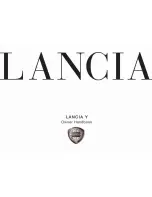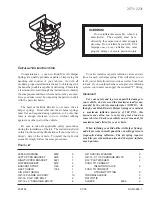
244
Controls
Wearing seat belts
Wearing seat belts
G
Risk of injury
A seat belt which is not worn correctly, or
which has not been engaged in the seat belt
buckle correctly, cannot perform its intend-
ed protective function. Under certain cir-
cumstances this could even cause severe or
fatal injuries.
Make sure that all occupants – in particular,
pregnant women – wear their seat belts cor-
rectly at all times:
The seat belt must pass closely over
your body and must not be twisted. You
should therefore avoid wearing bulky
clothing (e.g. a winter coat). The shoul-
der section of the belt must be routed
across the middle of your shoulder – on
no account across your neck or under
your arm – and pulled tight against your
upper body. The lap section of the belt
must always pass across the pelvic area
as low down as possible, i.e. across your
hip joints – not across your stomach or
lower abdomen. If necessary, tighten
the belt strap by pulling it down slightly
and retighten in the direction of the iner-
tia reel.
Do not route the belt strap over sharp-
edged or fragile objects, especially if
these are located on or in your clothing,
e.g. spectacles, pens, keys, etc. The
seat belt strap could be damaged and
tear in an accident and you or other ve-
hicle occupants could be injured.
Only one person should use each seat
belt at any one time. Do not allow chil-
dren to be carried on the lap of another
occupant, since the child can then no
longer be restrained in the event of an
accident, braking or a sudden change in
direction, which could result in severe or
fatal injuries to the child and other occu-
pants.
Persons less than 1.50 m tall cannot
wear the seat belts correctly. For this
reason, secure persons less than 1.50 m
tall in specially designed, suitable re-
straint systems.
Children less than 1.50 m tall or under
12 years of age cannot wear the seat
belts properly. Therefore, always secure
these children in suitable child restraint
systems on suitable vehicle seats
( page 40). Follow the manufacturer’s
installation instructions when fitting the
child restraint system.
Do not secure any objects with a seat
belt if the seat belt is being used by one
of the vehicle’s occupants.
G
Risk of injury
A seat belt only offers its intended degree of
protection if the backrest is positioned as
close to the vertical as possible and the oc-
cupant is sitting upright. Avoid seat posi-
tions that do not allow the seat belt to be
routed correctly ( page 231). Position the
backrest as close to the vertical as possible.
Do not drive with the backrest reclined too
far back.
216_RE_2006-12a.book Seite 244 Montag, 2. Oktober 2006 12:06 12
Содержание 2006 CL-Class
Страница 2: ......
Страница 3: ......
Страница 21: ...216_RE_2006 12a book Seite 18 Montag 2 Oktober 2006 12 06 12...
Страница 25: ...4 216_RE_2006 12a book Seite 4 Montag 2 Oktober 2006 12 06 12...
Страница 45: ...24 216_RE_2006 12a book Seite 24 Montag 2 Oktober 2006 12 06 12...
Страница 77: ...56 216_RE_2006 12a book Seite 56 Montag 2 Oktober 2006 12 06 12...
Страница 241: ...220 216_RE_2006 12a book Seite 220 Montag 2 Oktober 2006 12 06 12...
Страница 353: ...332 Controls Air vents Air vents P83 40 3152 31 216_RE_2006 12a book Seite 332 Montag 2 Oktober 2006 12 06 12...
Страница 553: ...532 216_RE_2006 12a book Seite 532 Montag 2 Oktober 2006 12 06 12...
Страница 554: ......
Страница 555: ......
















































